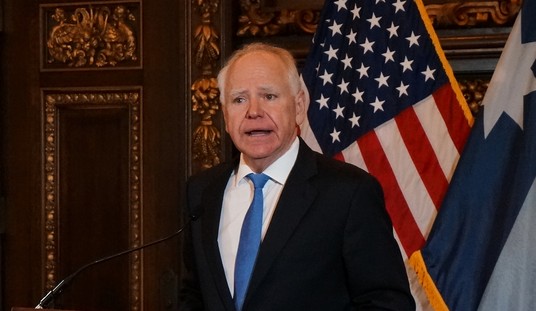There's a new narrative taking hold in the wake of the recent Tea Party protests and the anniversary of the Oklahoma City bombing: The Tea Partiers' intense opposition to the Obama administration has led to overheated political rhetoric, which could in turn lead to violence, perhaps as devastating as Oklahoma City.
Former President Clinton has emerged as a leading voice of this new narrative. In newspaper interviews, television appearances and a widely discussed speech, Clinton said it's "legitimate" to draw "parallels to the time running up to Oklahoma City and a lot of the political discord that exists in our country today."
"Watch your words," warned ABC News, reporting that Clinton "weighed in on the angry anti-government rhetoric, ringing out from talk radio to Tea Party rallies."
The reports dovetailed with earlier media stories depicting Tea Party gatherings as angry mobs, accusing protesters of throwing racial epithets at black lawmakers and of making threats of violence. The implication was that all this could be part of a nationwide trend. "Just this month, the Southern Poverty Law Center reported that it had tracked an explosion in extremist anti-government patriot groups fueled, in large part, by anger over the economy and Barack Obama's presidency," NBC's David Gregory said on "Meet the Press" in early April. "In this highly charged political atmosphere, where you've got so much passion, so much disagreement, this takes it, of course, to a different level."

How did this story line grow? Many of the claims that extremism is on the rise in America originate in research done by the Southern Poverty Law Center, an Alabama-based group that for nearly 40 years has tracked what it says is the growing threat of intolerance in the United States. These days, the SPLC is issuing new warnings of new threats. But today's warnings sound an awful lot like those of the past.
Recommended
In 1989, the SPLC warned of the growing threat of skinheads, saying, "Not since the height of Klan activity during the civil-rights era has there been a white supremacist group so obsessed with violence."
In 1992, the SPLC warned of the growing threat of other white supremacist groups, which it claimed had grown by 27 percent from the year before.
In 1995, the SPLC warned of the growing threat of right-wing militias.
In 1998, the SPLC warned of the growing threat of Internet-based hate groups that, according to one press account, had "created the biggest surge in hate in America in years."
In 1999, the SPLC warned that the growing threat of Web-based hate groups was growing even more, with a 60 percent increase from the year before.
In 2002, the SPLC warned of the growing threat of post-Sept. 11 hate groups, which it said had grown 12 percent between 2000 and 2001.
In 2004, the SPLC warned (again) of the growing threat of skinhead groups, whose numbers it said had doubled in the previous year.
In 2008, the SPLC warned of the growing threat of hate groups overall, whose number it said increased 48 percent since 2000.
And in 2010, just a few weeks ago, the SPLC warned of the growing threat of "patriot" groups, which it said increased by 244 percent in 2009.
In the world of the Southern Poverty Law Center, the threat is always growing. Ronald Reagan's policies led to a growing threat. The first Gulf War led to a growing threat. The election of Bill Clinton led to a growing threat. The Internet led to a growing threat. Sept. 11 led to a growing threat. The war in Iraq led to a growing threat. Is it any wonder that Obama's presidency has, in the SPLC's estimation, led to a growing threat?
Hate groups do exist across the political spectrum, and have for a long time. But they have nothing to do with the expressions of frustration over deficits, taxes and Obamacare that we have heard at so many Tea Party gatherings. That frustration, felt by Republicans, independents and even some Democrats, is an entirely mainstream reaction to the sharply activist course the president and congressional leadership have taken. While the level of frustration is indeed a threat, it is a political threat. Ask Democrats running in this November's elections.
It's important to distinguish between a political threat and a physical one. As Clinton might say, the hate accusers should watch their words.

























Join the conversation as a VIP Member